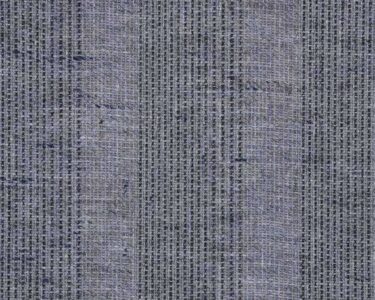Conscious Couture is more than a concept today, it’s the reality in which fashion exists. This pairing of
green and glamor alters the very fabric of defining fashion, as it intertwines a sense of value with an
eloquent dress code. Whether its eco-friendly textiles or fair trade policies, conscious couture is about
the embracing the contribution of the haute couture in healing the world.
For people interested in fashion, conscious couture transforms into a chance to wear glamorous and
fashionable clothing without feeling guilty about the environmental impact associated with it. So, let’s
examine the expansion of the standards of style thanks to sustainable luxury and conscious couture
in the fashion world as it is present at this point.
What is Conscious Couture?
Conscious couture is a form of high-end fashion that is created and enjoyed in a serious manner
while positively contributing to the environment. This approach focuses on the selection of raw
materials, how the clothing is made and its purpose.
It’s a revolution of style that wants the consumers to wear such creations that have a meaning
behind them created by nature lovers. Leading fashion houses have embarked on conscious
couture by creating timeless designs that urge individuals to go for lasting pieces rather than
purchasing many trends. With each creation comes a guarantee of practice making conscious
couture a revolution in the fashion business.
Sustainable Luxury Core Attributes of Conscious Couture
Green production Approaches in Couture the statement ‘eco-couture’ implies the use of sustainable
fabrics that are friendly to ecology and cause minimal pollution to the environment as much as possible.
Turned natural cotton, bamboo and waste materials will be included in millennial luxury. Such fabrics are
grown and manufactured with little to no resources depletion, showing the bright side of fashion in environmental conservation.
Ethically sourced and manufactured Couture Ethical trade policies are at the core of the conscious couture
movement. Brands emphasize on the fair employment of individuals on their products, paying them decent
wages and ensuring they have safe places to work for. This is a deep-seated belief that is properly evidenced
by the consumers’ outcry for more accountability in the production processes of all goods hence placing conscious
couture at the forerun as the fair-trade luxury clothing fashion.
Environmental friendly Dyeing and Finishing Processes In conscious couture practices, finishing processes have
lessened harmful waste origination due regarded dyeing processes. In an effort to lessen the pollution of water
and the practice of eco unfriendly measures, brands utilize natural pigments and non dangerous coatings. The
emphasis on green production further justifies the place of conscious couture particularly in the expensive market.
Premium Quality Wearable Art Strategies are put in place to embrace forming high end quality product as opposed
to fast fashion. Due to the quality based materials and craftsmanship, conscious couture helps wearers acquire every
piece of clothing as an heirloom. It is a practical strategy that encourages sustainability as it prioritizes the need for
making garments that people will wear for many years and not just for one season.
Creative Ways of Implementation of Recycled and Upcycled Materials Recycling and upcycling wearables helps to
breath in fresh air to out dated products. Old clothing is re-designed or re-cut using the available resources such as
old fabrics, metal parts, and various decoration items. Conscious culture does not shy away from claiming that women
can wear trendy clothes and still make use of recycling processes as a form of luxury.
How Conscious Couture Benefits the Environment and Society
The benefits of conscious couture go far beyond the scope of fashion, it’s a transition that is in line with the goals of sustainability on a global scale. The use of green practices and eco-friendly resources in turn enhances production in that less water, carbon and chemicals are used. In addition to that, conscious couture enables communities because fair trade enables craftsmen from backward economies. With conscious couture, consumers are part of an agenda that cherishes nature and beliefs which in return makes fashion a weapon for good.
Implementing and Integrating Conscious Couture to Everyday Fashion
Wearing conscious couture is much more than just ‘luxury’ as it goes beyond the ostentation of materials. Be careful to buy from companies that understand what you mean by environmental sustainability, rather than just buy for the sake of purchase. These delicate silhouettes for all season and all occasion dressing are encouraging style that will last more than any trend and therefore aid in the making of a sustainable capsule wardrobe. Be minimalist in approach by buying only multipurpose green designs that eliminate excess design waste and promote conscious behaviour in consumption.
Brands That Are Consciously Luxurious And Are Worth Exploring
Stella McCartney It is safe to say that the history of the luxury market is filled with an abundance of products created and marketed in complete disregard to the surroundings. Therefore, while adopting specific practices for other companies, the brand uses only natural fabrics and excludes toxic paints, thus its name has become associated with changes in the luxury fashion industry.
Mara Hoffman The boldest ray of color in any product that Mara Hoffman creates is, of course, its designer herself. Eco-friendly fabrics are used although the overall cost is higher because the designer believes in ethical trade and not beating and exploiting people’s wealth by helping them destroy themselves luxury sustainability.
Gabriela Hearst The collection of conceptions Gabriela Hearst creates is aimed for high-quality and sustainable goals within the luxurious fashion system, with an accent on exquisite workmanship and environmentally friendly materials.
Reformation Reformation aims to engage in the creation of pretty pieces that can be environmentally friendly and strives to walk the talk as far as sustainable practices are concerned denoting that ethical fashion does not have to be a gloomy affair.




